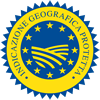Description
The Castagna del Monte Amiata PGI refers to the fresh chestnut belonging to the species Castanea sativa M., deriving from the Cecio, Marrone and Bastarda Rossa varieties.
Production Area
The production area of Castagna del Monte Amiata PGI is within the municipalities of Arcidosso, Castel del Piano, Castell’Azzara, Cinigiano, Roccalbegna, Santa Fiora, Seggiano and Semproniano in the Province of Grosseto, and the municipalities of Abbadia S. Salvatore, Castiglione d’Orcia and Piancastagnaio in the Province of Siena, in the Tuscany region.
Production Method
The chestnut trees must be situated in an area that is between 350 and 1000 metres a.s.l. Harvesting can be carried out by hand or with the aid of suitable machinery, and takes place between September 15th and November 15th, in different periods depending on the variety. The Cecio variety is the first to be picked, followed ten days later by the Bastarda Rossa variety and the Marrone variety ten days after that. In the event of adverse seasonal weather, harvesting can last for a further 15 days. Castagna del Monte Amiata PGI is preserved by either soaking it in cold water for a maximum period of seven days, without the addition of additives, or through the sterilisation of the fruit, which is put first in hot water, then in cold water, according to the traditional technique.
Appearance and Flavour
Castagna del Monte Amiata PGI is large (around 80 fruit per kilogramme), with a variable shape depending on the variety (from round-ovate to oval-elliptic for Marrone; oval with a slightly pronounced top for the Bastarda Rossa; globe-like for Cecio). The colour of the external shell (pericarp) ranges from tawny red to brown (Marrone), brownish-red with brown stripes (Bastarda Rossa) and shiny brown to brownish-red with darker stripes (Cecio). The pulp is light cream and has a sweet, pleasant and delicate flavour.
History
The origins of chestnut cultivation in the Monte Amiata area are ancient and consolidated in time. During the 14th century there was already mention of a specific regulation for the protection and use of chestnuts, with reference to both the harvesting of the fruit and deforestation for energy purposes. There was also an established calendar for the chestnut harvest, indicating both the exact period reserved for the tree owners and the period when the population could pick them freely. This permitted a minimum livelihood for everyone, including the poorest: considered “bread for the poor”, in the first half of the 20th century chestnuts constituted the only means of survival for most of the population.
Gastronomy
Castagna del Monte Amiata PGI should be kept in a cool, dry place. The culinary uses for Castagna del Monte Amiata PGI are infinite: glazed or dried, transformed into jam, ground into flour. Whether boiled or roasted, it pairs perfectly with cream, ice cream and sweet Muscat wine. It is the main ingredient in many traditional local recipes, such as fritters, polenta or castagnaccio, a traditional chestnut cake. It can also be used in fresh pasta, for flavouring soups, and even to make beer.
Marketing
The product is marketed as Castagna del Monte Amiata PGI, in the following varieties: Cecio, Marrone and Bastarda Rossa. It is available in autumn and is packaged in net food-grade bags of various sizes and weight.
Distinctive Features
The excellent organoleptic properties of Castagna del Monte Amiata PGI are given to the particular composition of the soil in the production area, which derives mainly from the weathering of volcanic rocks and sandstone with prevailing or abundant siliceous components. Furthermore, the particular climatic conditions of the Amiata area make it possible to produce quality products before the more northern areas in the region.































